Actualités Vereinigung der Buchantiquare und Kupferstichhändler in der Schweiz /Syndicat de la Librairie et du Commerce de lEstampe en Suisse Verband Deutscher Antiquare e.V. Verband der Antiquare Österreichs
A review of the 50th Anniversary Seminar for Antiquarian Booksellers in May 2022 exploring cultural and bibliophilic highlights in Berlin
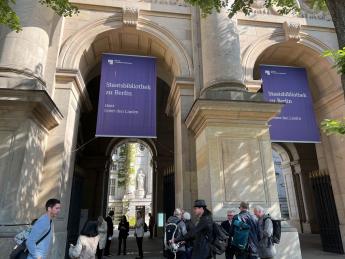
By Elena Jakobi
With 40 registered delegates and even a waiting list, an overall excitement about the long-awaited return of the seminar became was showing already in the run-up to the event. After a pause of almost two years due to COVID and a change of location, the joy of reunion was felt by all participants during the welcome in Adlershof in Berlin's East on Thursday afternoon.
During a diverse program over the coming days, participants did not only explore collections that were sometimes located behind magnificent facades, sometimes in simple residential buildings or through courtyards, but also got an impression of the vast dimensions of Berlin itself. Not only non-Berliners discovered new places - and a nice side effect for all: architectural walks and routes from one program point to the next offered the opportunity for conversations and personal exchange, which had long been missed.
The first item on the programme was dedicated to the writer Anna Seghers (1900-1983): Her apartment was home and workplace to the Berlin resident from 1955, after numerous times in exile, until her death in 1983. Like a time capsule, it offered a glimpse into her life as a committed GDR citizen, albeit one who was subtly critical and loyally supportive of her friends. While Doreen Kähler led a tour of the apartment's rooms, Susanne Thier described the archival aspects of the library's care for her estate.
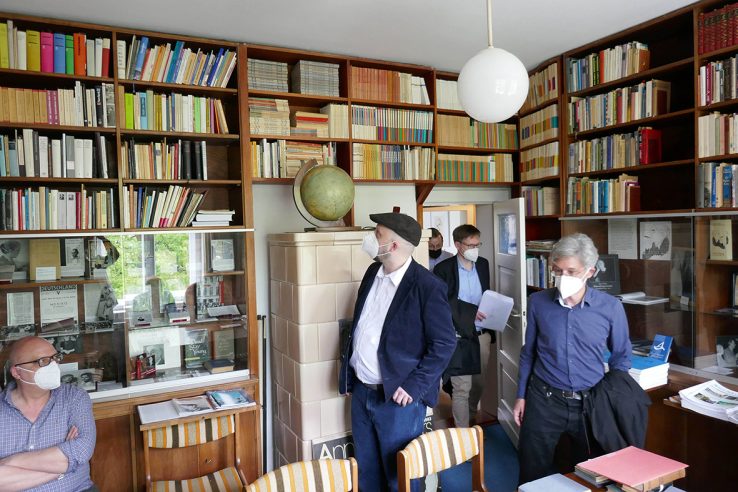
After a visit to the Soviet Memorial, a monumental place of remembrance in the expansive Treptow Park which has become highly explosive again after recent events, the first day of the seminar ended with a walk along the river Spree in balmy temperatures and the last rays of sunshine at the Klipper sailing ship restaurant.
A highlight was definitely the visit to the Berlin State Library on the magnificent boulevard "Unter den Linden" on Friday. With much enthusiasm and bibliophilic knowledge, the first half of the day, dedicated to the 20th century, was followed by a short travel through time.
Firstly, Prof. Eef Overgaauw led through the history of Bible manuscripts with selected originals, from the Tour
onenser Bible weighing over 20 kg to the delicate Paris Bible, difficult to read without a magnifying glass. Handwritten rubrics and initials were also found as witnesses of the transition from manuscript to printed book in some of the new incunabula acquisitions of the last ten years presented by Dr. Falk Eisermann. In addition to actual new acquisitions, Cicero's "De oratore" from 1485, a duplicate from Texas that had previously been removed, found its way back to Berlin. The Biblia Aurea print by Antonius de Rampegollis showed how diverse the reasons for acquisition can be. The date of 31 December 1500 mentioned in the colophon provided the crucial and compelling input for the purchase as a book printed on the last day of the incunabulum period - arbitrary or not, this parenthesis being not the only reason for the purchase.
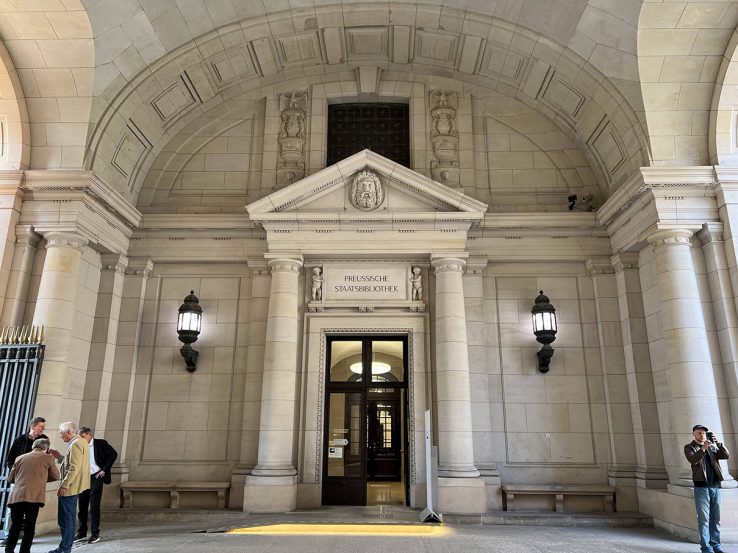
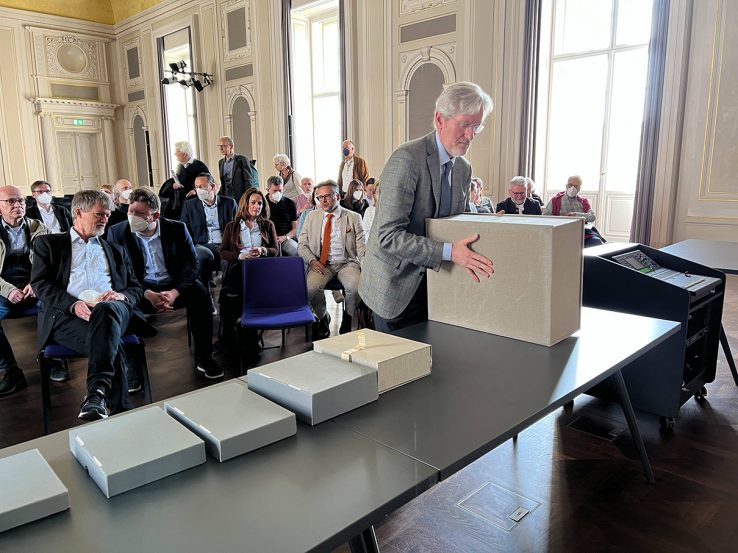
With a jump in media, time, and location, the afternoon continued in Dahlem with paintings and prints. The Kunsthaus Dahlem showed a small show of the artist Hans Uhlmann (1900-1975), who as a friend of Johanna "Jeanne" Mammen (1890-1976) also found his way into Dr. Martina Weiland's lecture. In between, one could use the time for a walk through the exhibition "Brücke 1910 - Kunst und Leben" (Bridge 1910 - Art and Life) with works by Karl Schmidt-Rottluff (1884-1976), Erich Heckel (1883-1970), Max Pechstein (1881-1955), Ernst Ludwig Kirchner (1880-1938) and others in the Brücke Museum right next door and get an insight into the work of the artist community around 1910.
Afterwards, we walked along "Clay" Avenue between embassy buildings and fashionable villas to Ristorante Macchiavelli, where the day ended with some culinary delights.
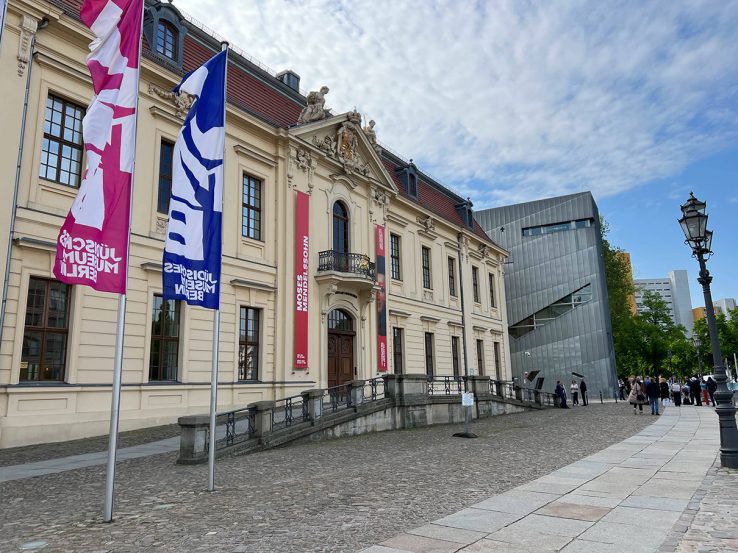
Saturday was devoted almost entirely to the philosopher and scholar Moses Mendelssohn (1729-1786), who was an accountant, business manager and later a partner in a silk factory. Mendelssohn was a formative figure in Berlin's enlightened scholarly world and a friend of Lessing, among others. First with guided tours through the current exhibition of the Jewish Museum, an impressive symbiosis of old and new in the form of a baroque city palace and a zigzagging, remarkable silver-grey new building by Daniel Libeskind. Thereafter and located now in a building bearing the same name, Thomas Lackmann described Mendelssohn's world of libraries, reading and publications. The Berlin connection remained, albeit with a leap into the 20th century. Michael Bienert gave an entertaining presentation on the writer Irmgard Keun (1905-1982) and her "Kunstseidenes Mädchen" in the context of the historical Berlin of the vibrant 1920s, a lecture that probably motivated some of us to read her work.
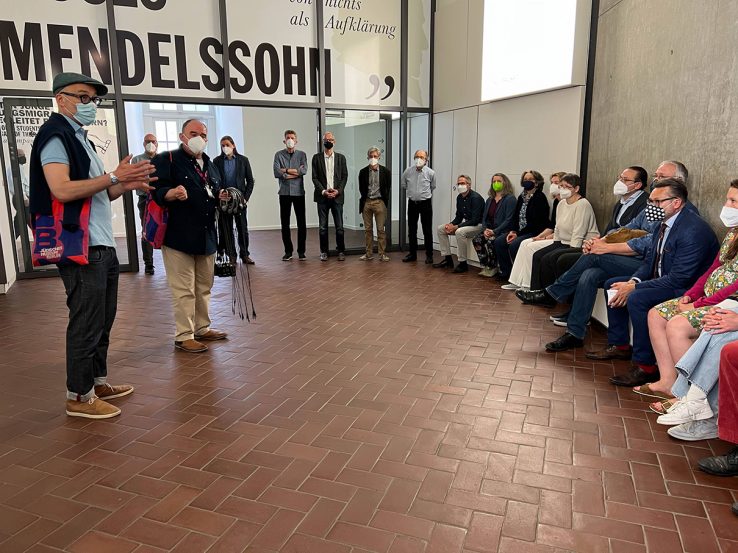
The final day of the seminar included a guided tour of the exhibition "Hannah Höch - Abermillionen Anschauungen" at the Bröhan Museum. On the one hand, the show is dedicated to her well-known collage works; on the other hand, collage in her oeuvre was not only explored as a way of
her works, but rather as a pattern of thought and composition. To round off the evening, visitors were treated to more culinary highlights: small appetizers and a glass of wine in the museum's elegant courtyard.
A résumé: Once again, the seminar flew bye far too quickly and.
Thanks for the excellent planning and careful choice of programme highlights of this 50th anniversary occasion but also heartfelt thanks to Alexis Cassel and Dr. Markus Brandis for the wonderful organization!
We are looking forward to seeing you again next year in Munich. (Elena Jakobi)

This article was first published on the website of the German Verband Deutscher Antiquare an is published here with the permission of the author.
All images by Robert Schoisengeier of Antiquariat Burgverlag, Vienna.
A wonderful selection of images of the seminar can be found HERE.
